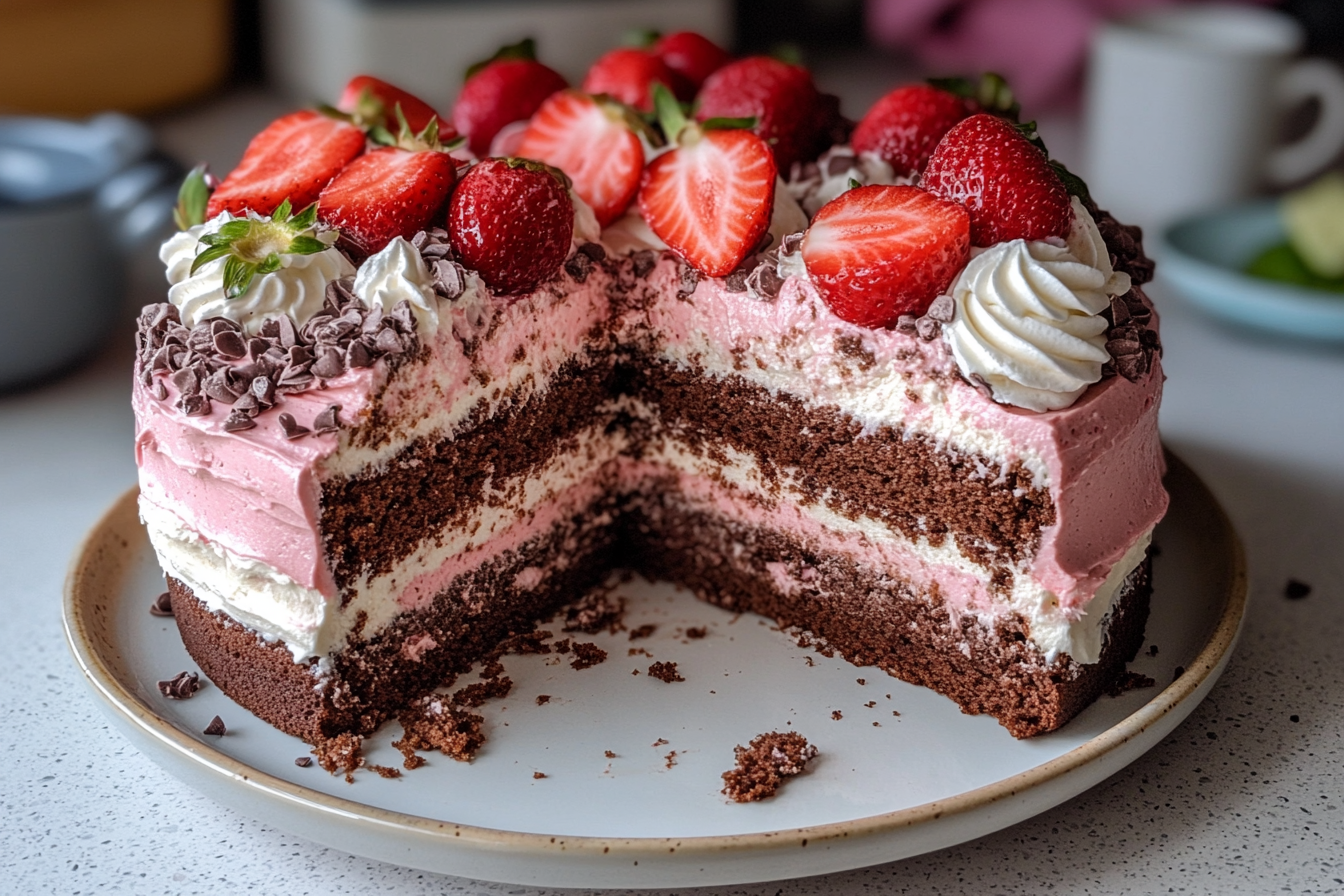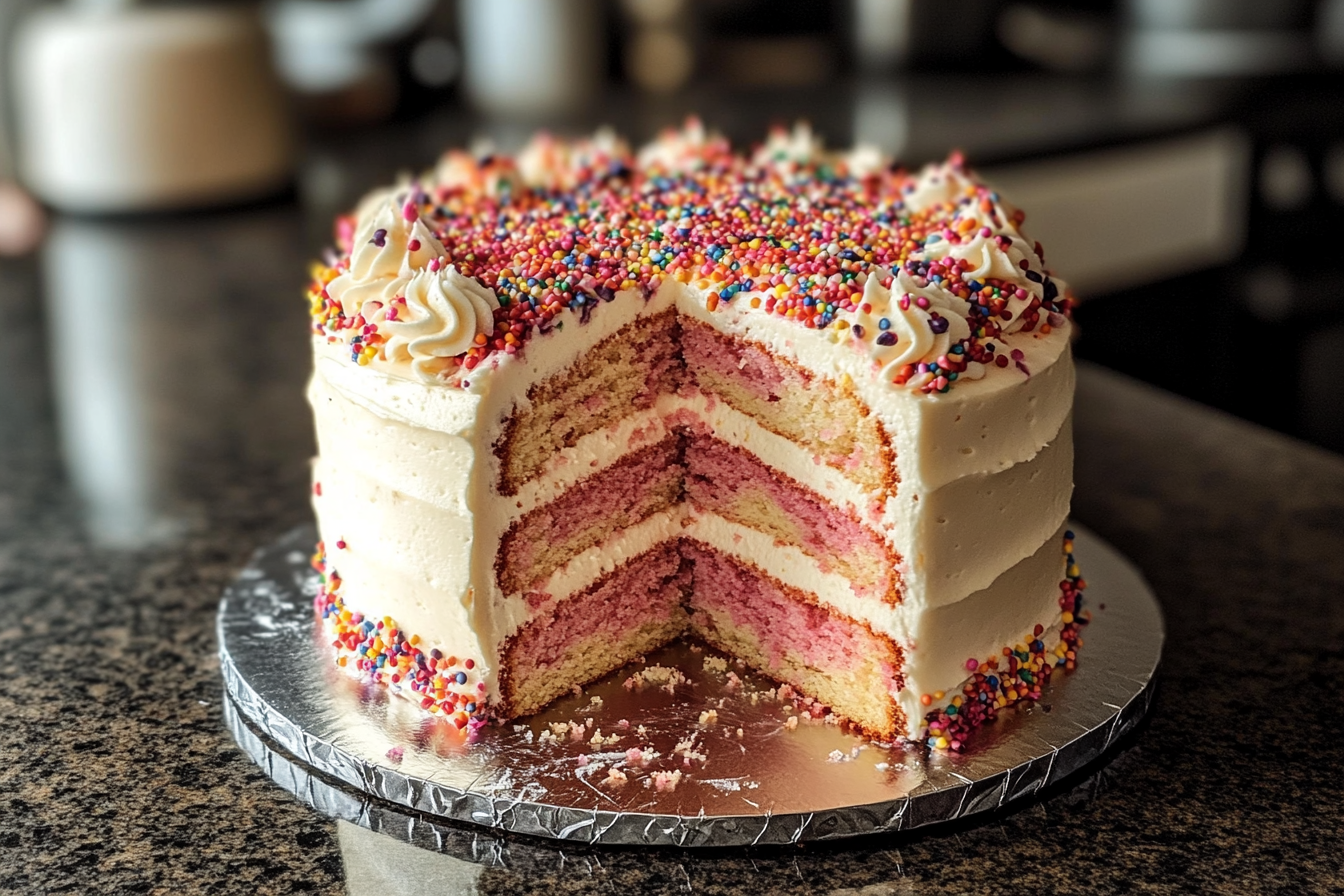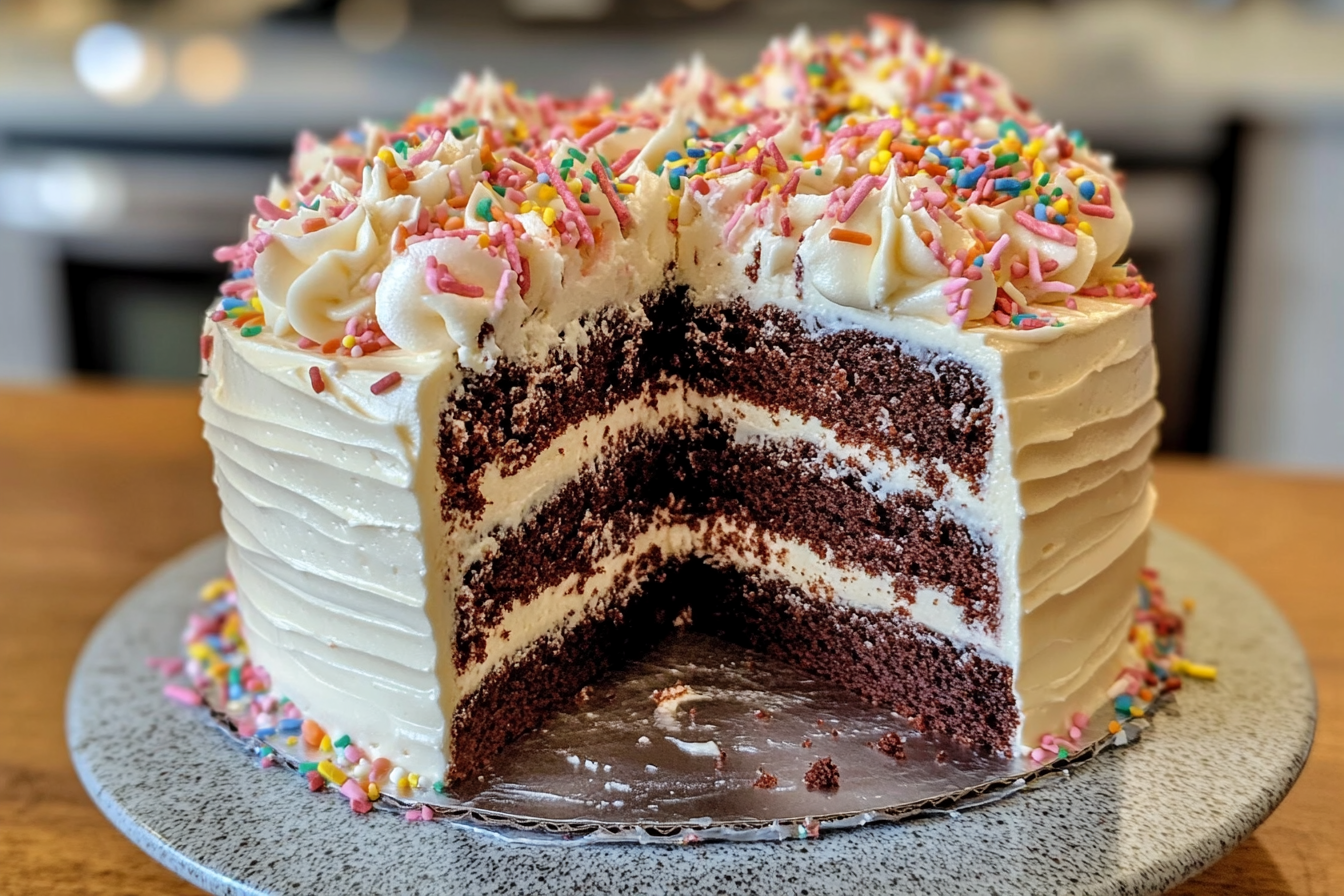Love Cake is more than just a dessert; it is a rich symbol of history, culture, and emotion. Originating from Sri Lanka and influenced by Portugal, this cake carries a legacy that spans centuries. Over time, it has become known as a symbol of affection and care, baked with the intent to express love. But what exactly makes it so special? The answer lies not only in its flavor but also in the traditions and stories behind it.
In this article, we will explore the history, cultural significance, ingredients, variations, and modern adaptations of Love Cake. Additionally, we’ll explore why people in Sri Lankan and Persian cultures have come to cherish this cake, answering the question: ‘Why is it called Love Cake?.
The Origins of Love Cake
The roots of Love Cake trace back to the 16th century, during the Portuguese colonization of Sri Lanka. As they settled on the island, the Portuguese brought with them their language, religion, architecture, and, of course, food. One of the culinary treasures they introduced was Bolo d’Amor, which translates to “Cake of Love.” This cake became the foundation for what we now call Sri Lankan Love Cake.
To truly appreciate this cake, it’s helpful to understand the broader context of Sri Lankan cuisine and its diverse flavors.
In Sri Lanka, local bakers adapted the recipe by incorporating native ingredients, especially the island’s aromatic spices. The result was a unique dessert, rich in both flavor and symbolism. Women traditionally baked this cake to win the affection of their suitors, a practice that gave the cake its name. The symbolism of love, care, and effort remains a central theme in the cake’s legacy today.
For more insights into how cakes are celebrated in different cultures, you can explore birthday cake ideas and designs, showcasing the various traditions that make these desserts so meaningful.
Portuguese Influence: The Foundation of Love Cake
During their time in Sri Lanka, the Portuguese left a lasting impact on the island’s culinary heritage. The Bolo d’Amor was originally a simple cake, made with semolina, eggs, and a small selection of spices. Yet, it was in Sri Lanka that this cake evolved into something far more exotic and complex.
The incorporation of local spices such as cinnamon, nutmeg, cardamom, and cloves elevated the flavor profile of the original Portuguese cake. The resulting fusion of Portuguese and Sri Lankan flavors created a dessert that became synonymous with love and courtship. Just as other global desserts carry cultural meaning such as the Neapolitan ice cream cake Love Cake holds a special place in Sri Lankan culinary history.
Sri Lanka’s Contribution: A Spice-Infused Love Story
Sri Lanka, often referred to as the “Spice Island,” was historically known for its abundant and high-quality spices. The island’s ideal climate made it a hotspot for growing cinnamon, cardamom, cloves, and nutmeg. These spices, integral to Love Cakes, played a crucial role in shaping the cake’s identity.
By adding these spices to the original Portuguese recipe, Sri Lankan bakers transformed the simple Bolo d’Amor into a richly aromatic and flavorful cakes. The combination of exotic spices gave the cake a depth and complexity that made it stand out from European desserts. Furthermore, in Sri Lankan culture, food is not just sustenance it’s tied to emotion, tradition, and health. Many of the spices used in Love Cakes were believed to have medicinal properties, making the cakes not just a treat for the taste buds but a symbol of health and vitality.
Why is it Called Love Cake?
The name Love Cake has a fascinating history, deeply connected to tradition and cultural practices. In the 16th and 17th centuries, women baked this cake to demonstrate their affection and skill in the kitchen. Preparing this cake was a labor-intensive process, and the selection of ingredients reflected the baker’s attention to detail. The spices used such as cinnamon, nutmeg, and cardamom were considered luxurious and valuable, adding to the cake’s charm.
The act of making the cake, from selecting ingredients to preparing the batter, symbolized the warmth and care the baker felt for their loved one. Similar to the way modern-day heart-shaped cakes symbolize love, as shown in this heart cake recipe and decorating guide, Love Cake became a culinary expression of romance.
The Cultural Importance of Love Cake
Love Cakes plays a significant role in Sri Lankan culture, especially in the context of celebrations and special occasions. Its association with love, affection, and care makes it an ideal dessert for weddings, anniversaries, and family gatherings. Beyond its rich flavor, the cake holds cultural significance as a symbol of heritage and tradition.
Sri Lanka: A Cultural Melting Pot
Due to its strategic location on the ancient spice routes, Sri Lanka has long been a cultural melting pot. The island’s history of colonization by the Portuguese, Dutch, and British has left lasting influences on its cuisine. Love Cakes is one of the most notable examples of this fusion, as it incorporates both European and Sri Lankan elements. The cake’s complex flavor profile, derived from the use of both Portuguese techniques and Sri Lankan spices, makes it a unique culinary creation.
People valued the spices in Love Cake including cinnamon, cardamom, cloves, and nutmeg not just for their taste. In Sri Lankan culture, they associated these spices with well-being, vitality, and health. For centuries, Sri Lankan people believed in the healing properties of these spices, and their inclusion in Love Cakes reflected this cultural connection between food and medicine.
For another take on how different cultures blend culinary traditions, you might be interested in exploring the history of the Neapolitan ice cream cake, another example of a dessert with deep cultural roots.
Portugal: Leaving a Lasting Legacy
The Portuguese influence on Sri Lankan cuisine cannot be understated. During their colonization, they introduced many dishes, but Bolo d’Amor (Cakes of Love) was particularly significant. This cake was a simple dessert that relied on semolina, eggs, butter, and a handful of spices. In Sri Lanka, however, this basic recipe took on a new life.
The Sri Lankan adaptation of Bolo d’Amor is a prime example of how cultures borrow from one another to create something entirely new. By infusing the Portuguese cake with local spices, Sri Lankan bakers created a dessert that remains an iconic part of their culinary heritage. Similar to how global desserts like the birthday cake have evolved, Love Cake stands as a testament to the fusion of cultures.
Key Ingredients of Love Cake and Their Symbolism
What sets Love Cake apart from other desserts is its unique combination of ingredients. Each component brings a specific flavor and texture to the cake, but beyond that, these ingredients carry deep cultural and symbolic meanings.
Semolina: The Foundation
At the base of Love Cake is semolina, a coarse flour made from durum wheat. Semolina gives the cake its distinctive texture, which is slightly grainy yet soft. This ingredient was part of the original Portuguese recipe, and its inclusion ties the cake to European culinary traditions.
Many Mediterranean and Middle Eastern cultures commonly use semolina, particularly in desserts like semolina cakes and puddings. Its use in Love Cake reflects the cake’s roots in Portuguese and European culinary techniques. The texture it provides makes Love Cake unique when compared to softer cakes, giving it a firmer, denser structure that pairs perfectly with the rich blend of spices.
The Spices: Cinnamon, Nutmeg, Cardamom, and Cloves
One of the key features of Love Cake is its fragrant and exotic spices. These spices are not only essential to the cake’s flavor but also hold significant cultural value.
- Cinnamon: This spice adds warmth and sweetness to the cake. In Sri Lankan culture, cinnamon represents warmth and affection, making it an essential part of Love Cake.
- Nutmeg: Nutmeg adds a slightly nutty flavor and is often associated with luxury and indulgence. Its inclusion reflects the wealth and status of those who could afford to make this cake.
- Cardamom: Cardamom provides a fragrant, citrusy note that balances the richness of the cake. It also symbolizes vitality and health in Sri Lankan culture.
- Cloves: Cloves impart a sharp, spicy flavor, adding depth and intensity to the cake. This spice represents passion, making it a fitting addition to a cake meant to symbolize love.
People highly prized these spices during the Portuguese era, and their inclusion in Love Cake highlights the historical importance of the spice trade in shaping global cuisine.
Rosewater and Puhul Dosi
Rosewater is another ingredient found in some variations of Love Cake, particularly in the Persian version. This floral essence adds a delicate aroma to the cake, enhancing its romantic associations. In Sri Lankan versions, puhul dosi (candied pumpkin) is often used instead of rosewater. The candied pumpkin adds moisture and sweetness to the cake, creating a unique texture.
The use of puhul dosi is particularly significant in Sri Lankan culture. People often associate pumpkins with fertility and prosperity. Including candied pumpkin in Love Cake symbolizes a wish for a prosperous and fertile union, making it an ideal choice for weddings and anniversaries.
The Symbolism of Baking Love Cake
Baking Love Cake is an act of love, care, and dedication. It is not a simple cakes to make; it requires time, effort, and patience. In the past, women would bake this cake as a way to demonstrate their affection and devotion to a suitor. People viewed the cake’s preparation as a labor of love, with each step reflecting the baker’s dedication.
Today, people continue to bake Love Cake as a symbol of love for special occasions, such as weddings and anniversaries. The act of making the cake is just as important as the cake itself. Much like how baking a heart-shaped cake conveys love and affection, as detailed in this heart cake decorating guide, the process of making Love Cake is steeped in meaning and emotion.
Sri Lankan vs. Persian Love Cake
While Love Cake is primarily associated with Sri Lanka, there is also a Persian version of the cake. Both cakes share similarities, such as their association with love and romance, but they differ in terms of ingredients and flavor.
Sri Lankan Love Cake: Rich, Spicy, and Dense
The Sri Lankan version of Love Cake is dense, rich, and filled with spices. It uses semolina as its base and incorporates cinnamon, cardamom, nutmeg, and cloves. The addition of candied pumpkin or puhul dosi adds moisture and sweetness, while cashews provide a satisfying crunch. The result is a cake that is both hearty and fragrant, making it a perfect dessert for special occasions.
In Sri Lanka, people often serve Love Cakes during weddings, anniversaries, and other family celebrations. They typically cut it into small squares and share it among guests, similar to how people serve wedding cake in Western cultures. The cake’s association with love and togetherness makes it a fitting dessert for these events.
Persian Love Cake: Light, Aromatic, and Floral
The Persian Love Cake, while similar in concept, differs in terms of ingredients and flavor profile. This version of the cake is lighter and more aromatic, often featuring rosewater and almonds as key ingredients. Bakers sometimes add saffron for an extra touch of luxury, which gives the cakes a golden hue and a subtle, earthy flavor.
While the Sri Lankan version of Love Cake is dense and rich, the Persian Love Cake is lighter and more delicate, making it a popular choice for spring and summer celebrations. Both cakes, however, share the same symbolic connection to love and affection, making them ideal for special occasions.
How to Make Sri Lankan Love Cake: A Step-by-Step Recipe
If you’re ready to try your hand at making Love Cakes, here’s a detailed step-by-step recipe that will guide you through the process.
Ingredients:
- 250g semolina
- 250g butter
- 300g sugar
- 10 eggs
- 100g candied pumpkin or puhul dosi
- 1 tsp nutmeg
- 1 tsp cardamom
- 1 tsp cinnamon
- 1 tbsp rosewater (optional)
- 100g chopped cashews
Instructions:
- Preheat the oven to 160°C (320°F) and grease a baking dish.
- Cream the butter and sugar: In a large bowl, cream the butter and sugar together until light and fluffy.
- Add the egg yolks: Separate the eggs, setting aside the whites. Add the egg yolks one at a time to the butter-sugar mixture, beating well after each addition.
- Add the semolina and spices: Gradually add the semolina, nutmeg, cardamom, and cinnamon to the mixture. Stir well to combine.
- Fold in the candied pumpkin and cashews: Add the candied pumpkin (or puhul dosi) and chopped cashews to the mixture.
- Beat the egg whites: In a separate bowl, beat the egg whites until stiff peaks form. Gently fold the beaten egg whites into the batter.
- Bake the cake: Pour the mixture into the prepared baking dish and bake for 60–75 minutes or until a skewer inserted into the center comes out clean.
- Cool and serve: Allow the cakes to cool before cutting it into squares and serving.
For more creative baking ideas, you can also explore how to make a heart-shaped cake, which shares a similar message of love and affection.
Modern Adaptations of Love Cake
While Love Cakes has its roots in tradition, modern adaptations have made their way into contemporary kitchens. These adaptations let people with different dietary preferences and needs enjoy the cake. Whether you follow a gluten-free or vegan diet, you can still enjoy this delicious cakes with a few adjustments.
Gluten-Free Love Cake
For those who are gluten-sensitive or have celiac disease, a gluten-free version of Love Cakes is easy to make. By replacing semolina with a gluten-free flour blend, you can maintain the cake’s signature texture and flavor. Gluten-free flour blends are widely available and can be substituted in equal amounts for semolina.
Vegan Love Cake
Traditional Love Cake relies heavily on eggs and butter, but vegan adaptations are possible. To replace the eggs, you can use flaxseeds or chia seeds as a binder. You can substitute coconut oil for butter and replace any dairy in the recipe with plant-based milk. These vegan alternatives still capture the richness and spice that make Love Cakes special.
Additional Variations
In addition to gluten-free and vegan adaptations, bakers have experimented with other flavor variations of Love Cake. Some popular adaptations include:
- Coconut Love Cake: By adding shredded coconut to the batter, you can enhance the tropical flavor of the cake.
- Chocolate Love Cake: For a richer dessert, you can add cocoa powder or melted chocolate to the mixture, giving the cakes a more decadent taste.
- Fruit and Nut Love Cake: Some bakers like to add dried fruits, such as raisins or dates, along with chopped nuts like walnuts or almonds, to give the cakes additional texture and flavor.
FAQs About Love Cake
Here are some frequently asked questions about Love Cake:
- What makes Love Cake unique?
The blend of semolina, aromatic spices, and the cake’s historical significance make it stand out from other cakes. Its unique texture and flavor are a direct result of the fusion between Portuguese and Sri Lankan culinary traditions. - Why is Love Cake associated with weddings and special occasions?
The cake’s association with love, care, and affection makes it a popular choice for weddings and anniversaries. Its rich, luxurious flavor also makes it a celebratory dessert. - Can I make a gluten-free version of Love Cake?
Yes, by using a gluten-free flour blend instead of semolina, you can create a version of Love Cake that retains its flavor and texture while accommodating dietary restrictions. - What’s the difference between Sri Lankan and Persian Love Cake?
The Sri Lankan version of Love Cake is denser and uses semolina, candied pumpkin, and spices like cinnamon and cardamom. The Persian version, on the other hand, is lighter and incorporates rosewater, almonds, and sometimes saffron.
Conclusion
In conclusion, Love Cake is not just a dessert it’s a symbol of love, culture, and history. From its origins in Portugal to its adaptation in Sri Lanka and Persia, this cake has captured the hearts of people around the world. Whether baked for a special occasion or simply as a gesture of affection, Love Cakes is more than a culinary delight it’s an expression of love.
For more inspiration in the kitchen, check out the brisket sandwich recipe or explore other culturally significant desserts that carry their own unique stories.
With its rich flavors, exotic spices, and cultural significance, Love Cake will continue to be a beloved dessert for generations to come.



